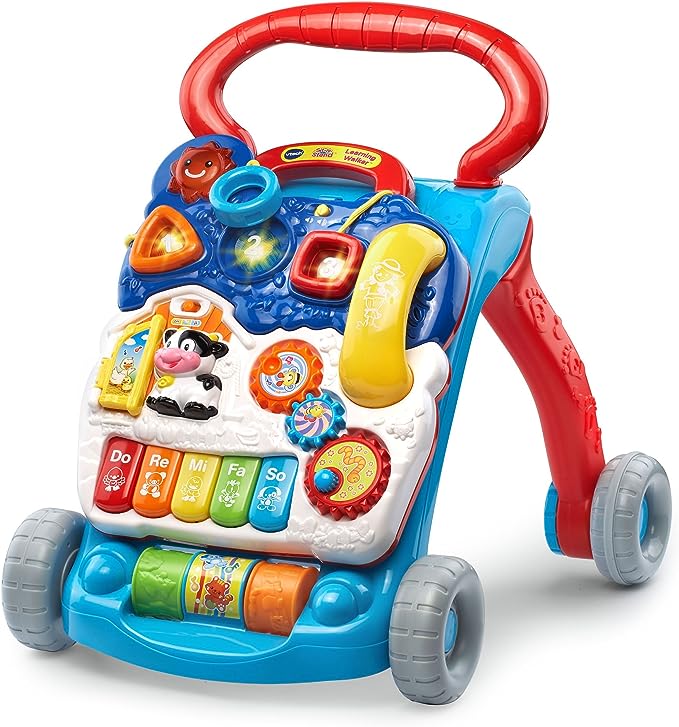A baby's rollover is one of the most exciting milestones for parents. It is a sign that your little angel is ready for more adventures, like crawling and walking. It also helps you know that your baby is developing well physically. Most parents wonder when babies start rolling over and what they can do to support this important milestone.
Other Topics You Might Like
Helpful Products You Might Like

Splashin'kids Tummy Time Water mat

Jumbo Inflatable Baby Roller Toys

VTech Sit-To-Stand Learning Walker
"(Paid Links)" 
Understanding the Developmental Timeline
Babies often start rolling over between 4 and 6 months of age. However, it's important to remember that babies develop at their own pace. Some might roll over earlier or later than this window, and that's perfectly normal. Rolling over is a complex skill that involves developing strength and coordination in the neck, shoulders, and core muscles.

Early Signs of Rolling Over
Before a baby rolls over for the first time, they will exhibit certain behaviors and muscle developments that indicate they are working toward this milestone. For instance.
Tummy Time
Babies who spend time on their stomachs during tummy time will develop the upper body strength needed for rolling over. Tummy time also helps in strengthening the neck muscles and improving motor skills.
Reaching and Grasping

As babies become more adept at reaching for toys, they'll start to shift their weight, which is a precursor to rolling. Their ability to grasp objects also contributes to the development of their arm and shoulder muscles.
Head Control
Good head control is essential for rolling over. Babies need to be able to lift and turn their heads while lying on their stomachs to eventually roll onto their backs and vice versa.
The Rolling Over Process
Rolling over typically begins with a baby moving from their stomach to their back. They will first learn to turn their head to one side, then push with their arms and legs to complete the roll. Once they have mastered rolling from stomach to back, they will start practicing rolling from back to stomach. This process usually happens between 5 and 7 months of age.
Supporting Your Baby's Rolling Over

Parents can encourage their baby to roll over through a few simple activities.
Tummy Time
Continue to provide tummy time several times a day. Place interesting toys just out of reach to encourage your baby to reach and pivot their body.
Play on a Soft Surface
Use a playmat or soft carpet to give your baby a safe space to practice rolling over. Avoid placing them on a hard surface where falls could result in injury.

Use Toys as Incentive
Place toys or colorful objects just out of reach to motivate your baby to reach and roll towards them.
Model the Movement
Gently help your baby roll from side to side to show them how it's done. This can help them understand the movement and build their confidence.
Encourage Movement
Avoid keeping your baby in a stationary position for too long. Allowing them to move freely helps in muscle development and coordination.
When to Seek Help
The majority of infants will start rolling over within the typical age range. However, if your baby appears to be experiencing considerable delays or if you have worries about their physical progress, it is advisable to seek advice from your pediatrician. They can offer direction and evaluate whether there are any fundamental concerns that require attention.
Conclusion
Rolling over is a crucial developmental milestone that marks the beginning of more advanced motor skills. By providing your baby with plenty of tummy time, encouraging movement, and ensuring a safe environment, you'll help them achieve this exciting milestone and continue to support their physical development as they grow.
